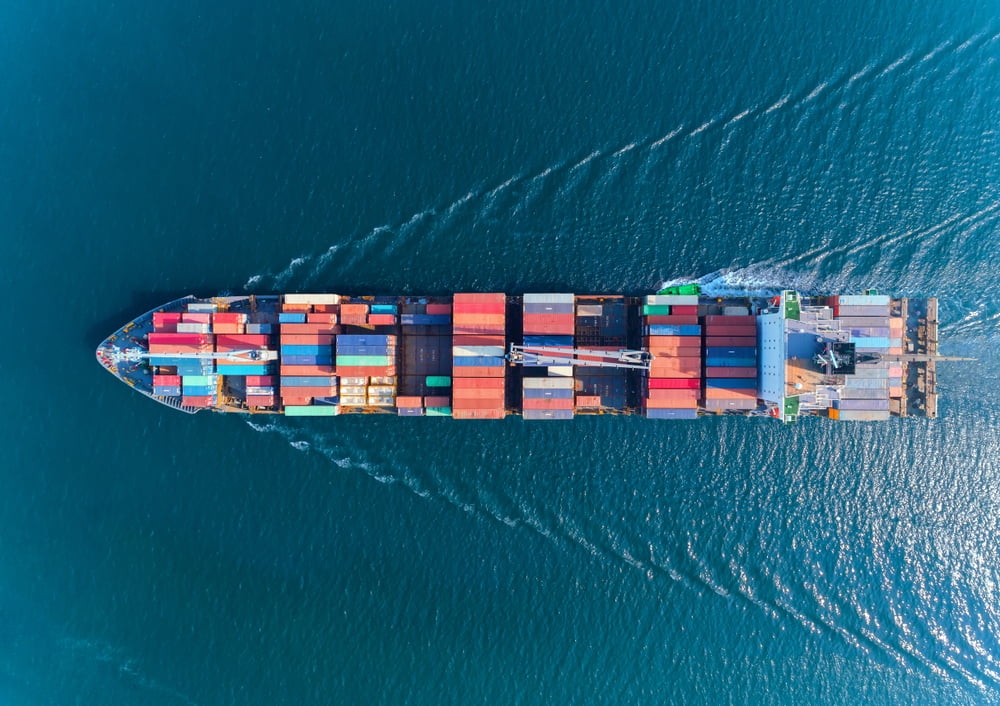Most industries have been trying to ramp up sustainability efforts lately. But in shipping, becoming more eco-friendly has been an uphill struggle for some time.
Because the vessels used to transport essential goods run on high-carbon fossil fuels, and so many of them are required to cater to global demand, the shipping industry contributes to a significant percentage of CO2 emissions. And this percentage will only rise as the shipping industry grows.
So, as it stands, the global warming reduction targets so many countries promised to help achieve in the Paris Agreement are taking a backseat — and the International Maritime Organization’s (IMO) plan to cut annual greenhouse gas emissions from international shipping by at least half by 2050 seem like a distant dream.
But things reached a turning point during the COP26 summit last year.
At this international climate conference, 22 countries, including the UK, signed up to the Clydebank Declaration. This contract saw signatories pledge to establish zero-emission shipping routes known as green corridors (ensuring at least six are set up by 2025) to reduce the shipping industry’s carbon footprint.
As we work towards this much-needed yet highly ambitious target, we look at how developing green corridors will help decarbonise the shipping industry — and the obstacles standing in their way…
Providing eco-friendly passageways
Green corridors are specific trade routes between major port hubs where every effort has been made to minimise the carbon emissions of the shipping operations that pass through them.
Any technology, programme or resource could be deployed within green corridors so long as it helps promote zero-carbon shipping. For instance, green corridors might necessitate the use of low-carbon alternatives to traditional fuels like biodiesel and methanol — or encourage the use of route-optimising systems that use artificial intelligence (AI) to streamline shipping journeys and minimise wasted fuel.
Take the project that Schneider Electric is acting as a partner on as an example. The French multinational is helping to deliver the UK’s first green corridor between Dover, UK, and Calais and Dunkirk in France — a channel that accounts for more than a third of British ferry traffic. The corridor will provide electrical power to berthed vessels, also known as shore power.
Not only do green corridors like this have the potential to decarbonise shipping operations between the two ports where they are installed, but they can also have a hugely positive ripple effect on the entire shipping industry.
The development of green corridors will mobilise demand for renewable fuels and accelerate investment in the solutions that will take the shipping industry closer to net zero. Green corridors will also show countries which solutions are scalable and, if executed successfully, give other nations the confidence to implement them — promoting lower-emission shipping operations across the globe.
However, we are not quite ready for green corridors to start traversing our seas.
Overcoming obstacles to development
There are various considerations that need addressing before we reach the goals of the Clydebank Declaration.
Currently, zero-emission fuels are not a cost-competitive option. So, if the shipping industry is to make the transition away from fossil fuels and green corridors are to emerge, we need substantial incentives and feed-in tariffs that ensure it is financially viable to switch to low-carbon fuels.
The sector also lacks the means to supply ships with adequate amounts of zero-carbon fuels. For example, according to the International Renewable Energy Agency, less than 0.2 megatons of renewable methanol is produced per year. As such, countries need to invest in renewable fuels to limit CO2 emissions and enable the development of green corridors.
Data processing can also be cumbersome and expensive, which limits the development of route-optimising capabilities that are so crucial to the introduction of green corridors. To resolve this issue, countries must invest in low-cost devices like data buoys, which gather and transmit critical information for use in journey planning.
And, of course, to prevent collisions between passing vehicles between the busy ports where green corridors will be established, the right marine aids to navigation (AtoN) must be deployed. Critical solutions like navigation buoys and lights help mark safe lines of passage to ensure ships do not veer too close to obstructions and help them navigate port entrances and exits safely. Equally, the information collected from data buoys can help ships plan more efficient routes, use less fuel and bring us closer to a world with ample green corridors.
Hydrosphere boasts a selection of marine AtoN for use in green corridors. Call +44 (0)1420 520374 or email [email protected] for more information.








